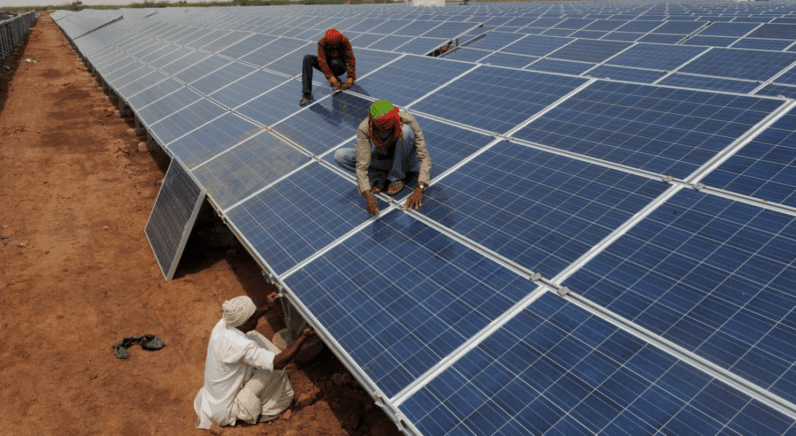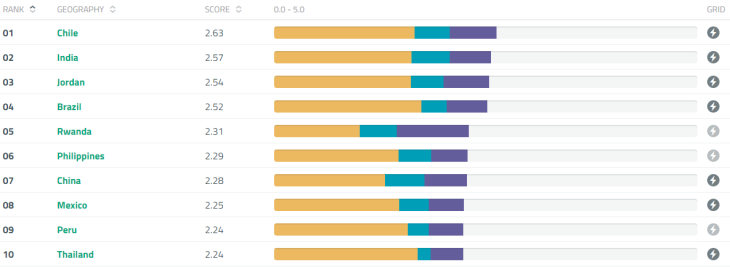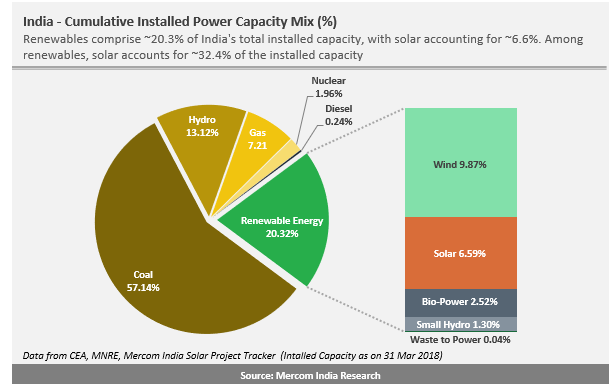India Takes The #2 Rank In Renewable Energy, But Can't Cut Its Heavy Reliance On Coal
Karamchand Rameshwar - Nov 29, 2018

Even though India's renewable energy sector is developing with a rapid rate, claiming the #2 spot in the world, but still have to rely heavily on coal.
- Delhi Is The World’s Most Polluted Capital City For Three Years In A Row
- Indian Farmers Install High-Tech, Night-Vision CCTV Cameras To Protect Themselves
- Looking For The Best Electric Bike In India 2021? Take A Look At These
It can be a big challenge for India, a country with a huge population and a rapid development, to keep up with the growing requirement for energy. It is commendable that the country is putting heavy investment in renewables to be the second biggest consumer among the developing countries, according to BloombergNEF’s report.
India was ranked by the Climatescope survey at the second position, only behind Chila, on the global leaderboard of developing countries. But the country’s efforts are ruined by the coal sector.
103 developing countries were assessed on the report of BloombergNEF by some indicators such as structures of the power sector, installed capacities, infrastructure development rate, emission, and energy policies.
India is just slightly behind Chile, staying at the #2 position
India has a commendable progress considering that the country has already jumped from the previous #5 rank to now #2. Meanwhile, China has dropped from the leading position last year to position #7 this year.
This clearly shows that the second biggest populous country in the world has taken its goal of installing 175 GW of renewable energy capacity by March 2022 very seriously, as announced in the Paris Climate Accords. And India, so far, has already completed almost 40 percent of that goal, installing 71 GW of renewable energy capacity as of June this year.
The renewables auctioned capacity of India has increased by about 68 percent, and more than $7.4 billion was invested in clean energy, mostly solar, in just the first half of 2018, indicating a considerable increase in the interest in this clean energy sector over this year.
However, according to the report, the number of installed renewable energy infrastructures of India surpassed the number of coal power plants in 2017 for the first time, it shows that the country is still not even close to reaching their goal - unlike some nations which have already vowed to stop using coal within the announced deadline.
Coal still occupies the largest portion
India has to gradually reduce the amount it invests in the coal sector over time if it wants to set a similarly optimistic goal for the future and in fact, this is already happening.
Noted in the report:

A consulting firm in renewable energy, Bridge to India, published a report noted that the number of new solar power installments dropped drastically and made a prediction that this trend might continue.
The firm also added in a Quartz report that the remaining 100 GW of the promise of India to, by 2020, reach 175 GW in renewable energy, the progress’ current rates would only make India achieve 67 GW - much lower than its goal.
In addition, by 2025, the population of India most likely get up to 1.5 billion from the current population of 1.3 billion and the challenge to expand the clean energy infrastructure of the country to cater such a large population will be even more daunting.
The massive population of India is posing many problems, energy is one of them
The challenge probably is not as tough in some developed nations which have already chosen to forgo the use of coal in the next decade, because the growth rate of their population is not as high as India. So it would not be fair to compare goals and also achievements of India to developed nations. However, this can be an excellent opportunity for the country to show to the world how to change to clean energy a big scale at the time when climate change is posing many real and imminent threats.
Featured Stories

ICT News - Dec 25, 2025
The Visibility Concentration Effect: Why Half the Web Isn’t Qualified Anymore

ICT News - Jul 05, 2025
Windows 11 is Now the Most Popular Desktop OS in the World

ICT News - Jul 02, 2025
All About Florida’s Alligator Alcatraz: A Smart Move for Immigration Control

ICT News - Jun 25, 2025
AI Intimidation Tactics: CEOs Turn Flawed Technology Into Employee Fear Machine

ICT News - Jun 24, 2025
Tesla Robotaxi Finally Hits the Streets: $4.20 Rides That'll Make You Hold Your...

ICT News - Jun 24, 2025
World's First Flying Humanoid Robot Takes Flight

ICT News - Jun 24, 2025
When Closed Source Met Open Source: Bill Gates Finally Meets Linus Torvalds After...

Gadgets - Jun 23, 2025
COLORFUL SMART 900 AI Mini PC: Compact Power for Content Creation

ICT News - Jun 22, 2025
Neuralink Telepathy Chip Enables Quadriplegic Rob Greiner to Control Games with...

ICT News - Jun 20, 2025




Comments
Sort by Newest | Popular